1925 Ford Model T Tourer
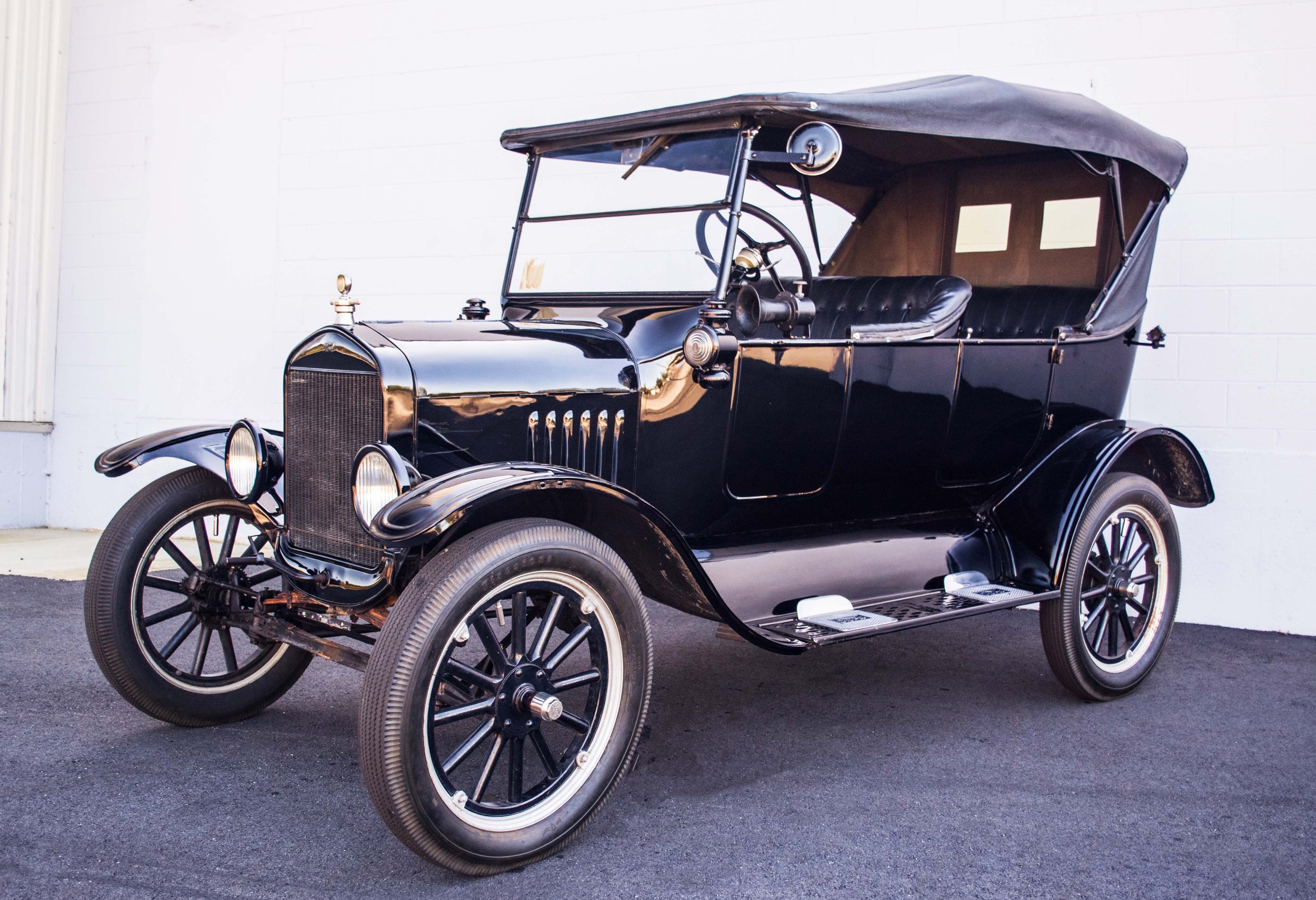
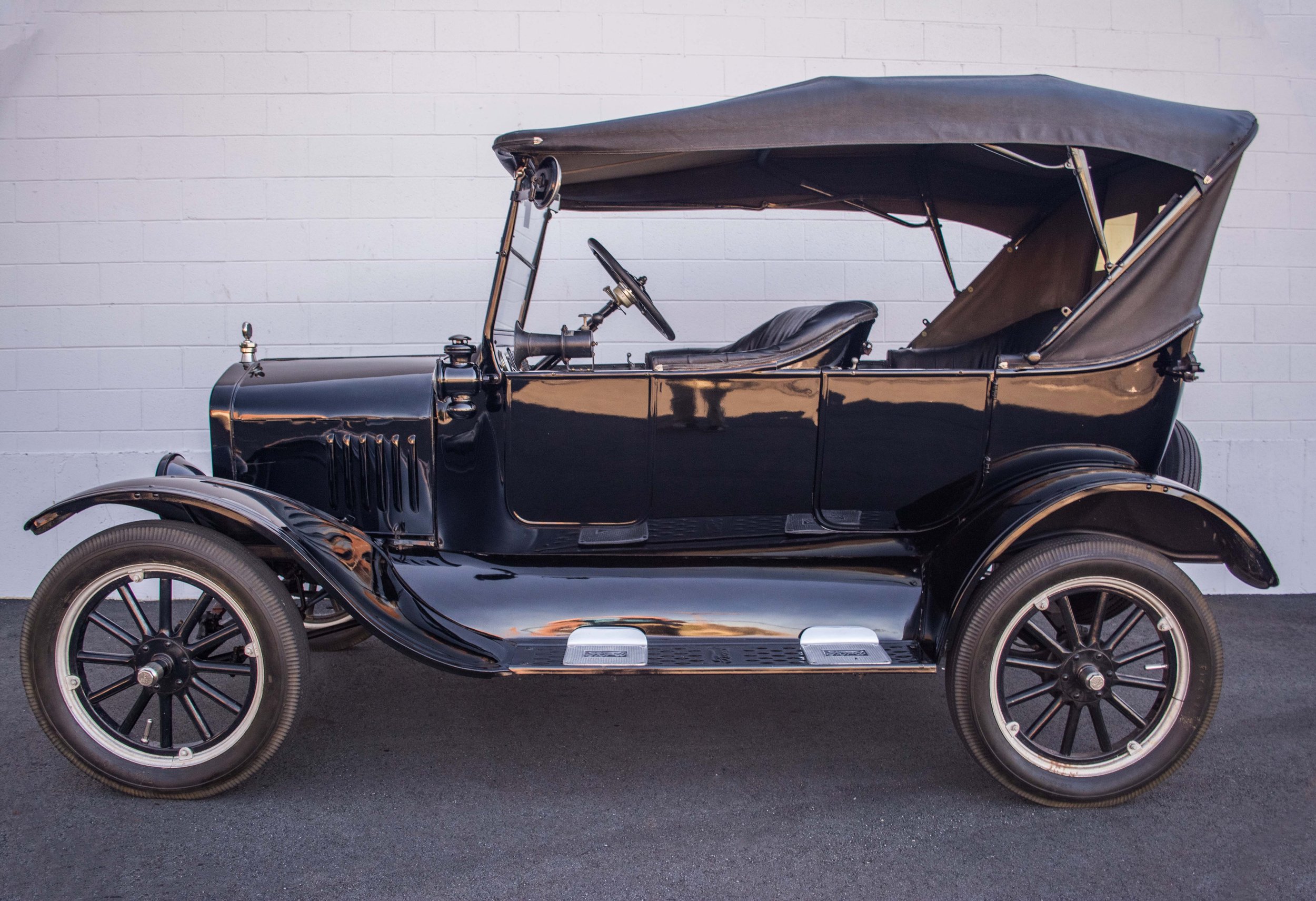
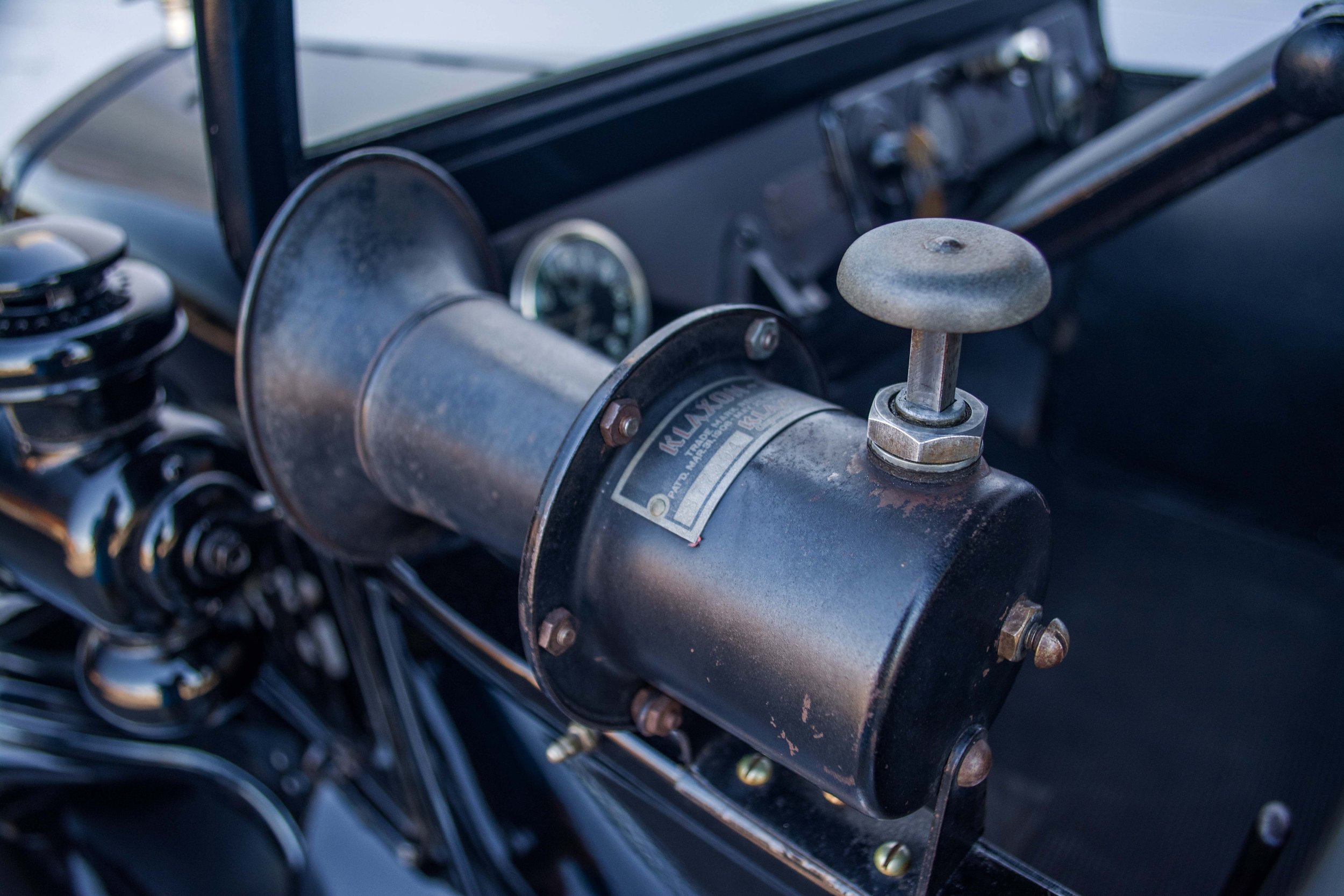

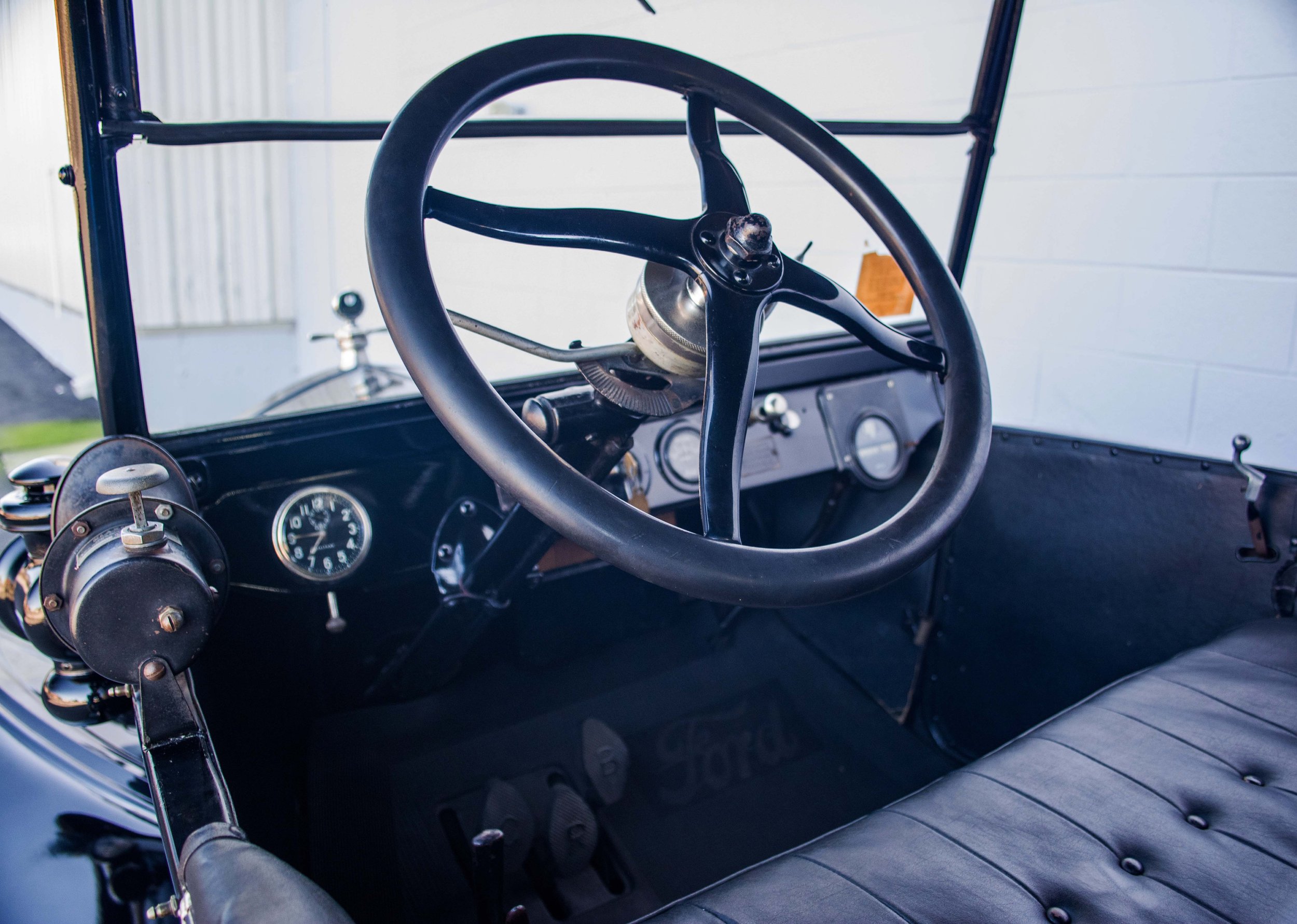
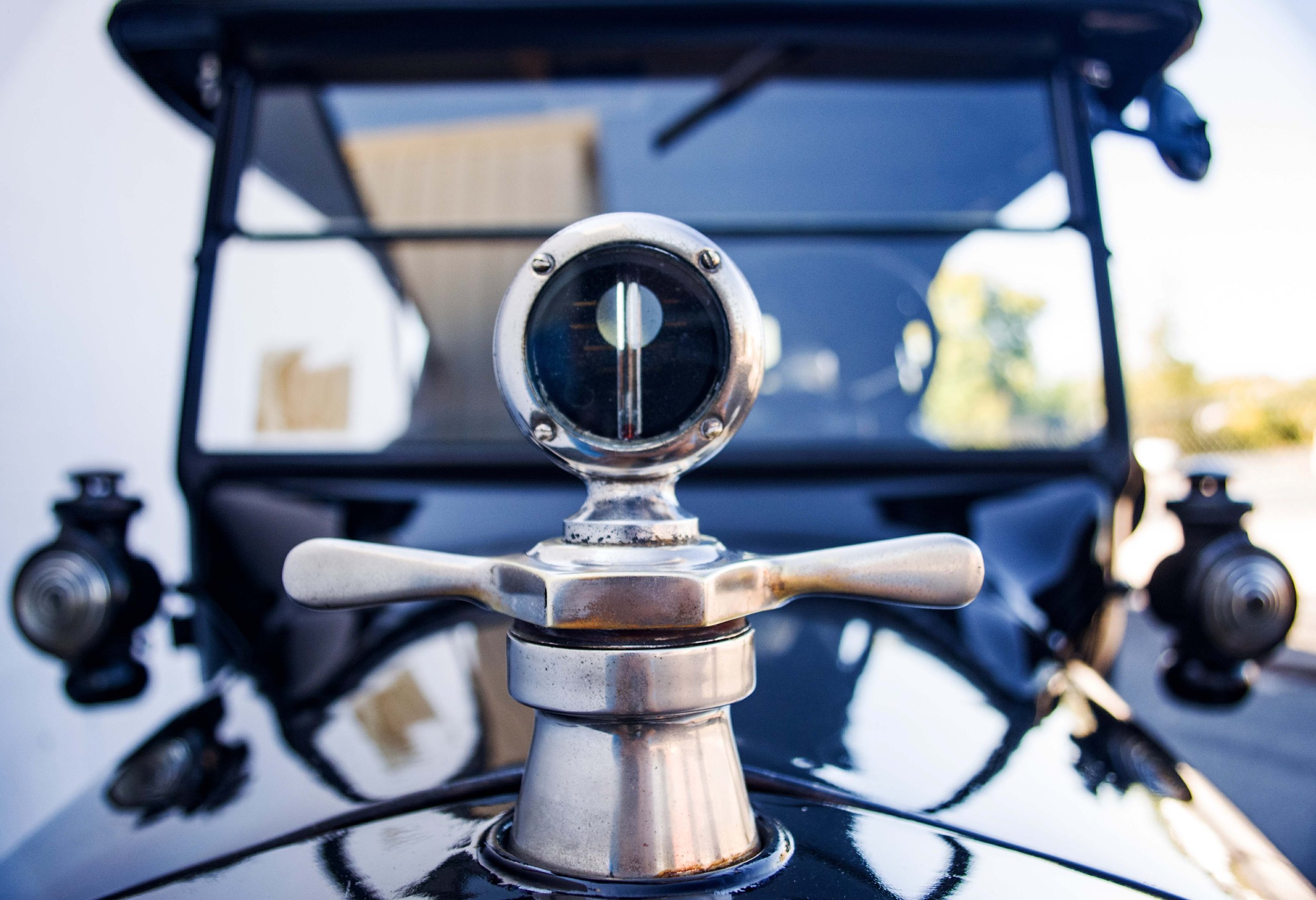
Before 1924, all headlights generated a single beam pattern, similar to today’s ‘high beam.’ The first dual beam system was developed in the mid-1920’s, due in part to the invention of the two-filament automotive bulb, which easily enabled the separate high and low beams.
The engine was simple and efficient, with all four cylinders cast in a single block and the cylinder head detachable for easy access and repair.
Its revolutionary left hand steering feature allowed passengers easy access to and from the cars.
The first to make such extensive use of the lightweight but strong alloy known as vanadium steel.
Prior to the Ford Model T, cars were a luxury item, as many sought after automobiles were hand-built kinetic art pieces, used by their owners for pleasure, not necessity. Most of these cars cost as much as the average house at the time (or more), making them far from affordable for the working class - this all changed greatly with the introduction of the Model T. The Model T was the car that opened road travel to middle-class Americans and led to the numbered highway system. The Model T could, at the height of its production history, be at a cost to the 1925 consumer of only $295. The Model T, also known as the “Tin Lizzie,” became an American folkloric symbol and the first Ford to have all its parts built by the company itself.
The Model T was offered in several body styles, including a five-seat touring car, a two-seat runabout, and a seven-seat town car. All bodies were mounted on a uniform 100-inch-wheelbase chassis. A choice of colours was originally available. The engine was simple and efficient, with all four cylinders cast in a single block and the cylinder head detachable for easy access and repair. In most models the engine was started by a hand crank, which activated a magneto connected to the flywheel, but after 1919 some models were equipped with battery-powered starters. The transmission, consisting of two forward gears and one reverse, was of the planetary type, controlled by three foot pedals and a lever rather than the more common hand lever used in sliding-gear transmissions. Spark and throttle were controlled by a hand lever on the steering column. The 10-gallon fuel tank was located under the front seat. Because gasoline was fed to the engine only by gravity, and also because the reverse gear offered more power than the forward gears, the Model T frequently had to be driven up a steep hill backward. The revolutionary vehicle saw the placement of the steering wheel on the left side, allowing passengers easy access to and from the cars. The vehicle was the first to have its engine block and the crankcase cast as a single unit, as well as the first to make such extensive use of the lightweight but strong alloy known as vanadium steel.
Producing more than 15 million cars from 1908 to 1927, the Model T quickly became prized for its low cost, durability, versatility, and ease of maintenance. The Model T was first tested by Henry Ford, who took the vehicle on a hunting trip to Wisconsin and northern Michigan. The Model T became famous for the stunts it could perform including climbing the stairs of the Tennessee State Capitol and reaching the top of Pikes Peak. After the test of his own product, the vehicle was shipped to its first customer on October 1, 1908. The publicity stunt also led to 14,000 Model Ts being sold in the UK. Henry Ford’s dream of manufacturing a universal car was starting to become a reality.
By 1913, a brand new 60-acre factory was built in Highland Park to quickly produce Model Ts. At the time, Highland Park was considered to be the biggest factory in the world, and the number of Ford employees more than doubled. On April 1, tests were conducted and an attempt to assemble a flywheel magneto for the Model T was made.
Competition arose in the mid-1920s giving consumers more choices of touring car models than a decade earlier. The Model T tried to compete, but sales dropped and it became considered old fashioned. Additionally, its less than comfortable ride at top speeds and rattling made the Model T the butt of jokes in songs, poems, and stories. After much hesitation by Ford, it was announced in 1927 that Model Ts would no longer be manufactured. The new Ford called Model A debuted in December after having to scrap 40 thousand tools that could only be used to build Model Ts.
It was the end of an era.
While the high quality of a hand built car speaks for itself, the process of production took far too long. Companies worked as fast as they could to produce just a few cars each year. Many of these hand built cars had unique, one-off options that further increased production time. Ford did the opposite. He introduced the first generation version of assembly line production to the world, moving away from the ‘flexible mass production’ method. In six months, the time to build a Model T was reduced from nine hours and fifty-four minutes for one motor to five hours and fifty-six minutes. The factory was divided into sections, each assembling a single part of the car in an incremental building process. The Highland Park factory featured 500 of these departments in its assembly line. Each employee was trained to complete one step. Production numbers increased significantly as the assembly line increased its speed. Just 11 cars were built in the first month of production, though by 1925, 10,000 were built each day. By then, the Model T was the American automobile industry’s social norm.
This 1925 Model T is special; Kept in very original condition, having only been repainted in 1959, the Audrain acquired it from a local Middletown family. The car has spent nearly its entire life here on Aquidneck Island, Rhode Island.
Specifications:
Configuration: Front engine, rear wheel drive
Engine: Inline 4-cylinder
Displacement: 176.6 cu in
Horsepower: 20hp
Torque: 83 IBS ft
Transmission: 2-speed planetary gear, billed as "three speed"

